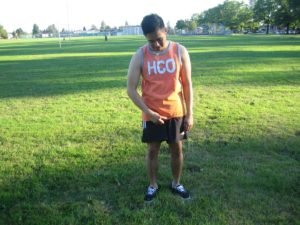Athletes are known to be susceptible to a pulled groin. Individuals who do not engage in sports can also end up with a pulled groin while engaging in simple exercises such as lifting weights, stretching, running or walking. Depending on the length and depth of the rupture, the symptoms related to a pull can either be mild or severe.
Air leaps
If the rupture is severe, the shot of sudden pain can be intense. If the individual is running fast when the muscle pulls, the rupture can send him/her leaping into the air for about a second. This occurs once one of the three adductor muscles snaps or pops as it ruptures. In case the tear is severe, the individual might not be able to walk without assistance.
Weakness and stiffness
There is stiffness and weakness in the groin area especially close to the adductor magnus muscle. This indicates that the individual experienced a pulled groin. If more pressure is applied to the muscles by standing or walking, the weaker, tender and stiff the muscles become. If the rupture or strain occurred at the adductor longus muscle which is near the crown of the thigh, the individual can suffer stiffness and feebleness in the hip area.
Noticeable shift

Once the adductor brevis, longus or magnus muscles are overly stretched or torn, there is an abrupt and intense pain at the top of the thigh. If the adductors muscles on the right side of the body are pulled, there is a shot of pain in the right thigh. If the adductor muscles on the left side are pulled, there is pain in the left thigh. As for a hard blow to the interior thigh, it can cause abrupt piercing pain in the groin.
Fatigue and bruises
A pulled groin is severe enough to rupture a blood vessel in the thigh, thus causing the groin muscles to bruise. The pulled and strained muscle tissues can also lead to fatigue. Additionally, the muscles can also feel stiff or tight after a pull. As first aid care, it should involve rest, compression and elevation so that the muscles can heal. If weight or pressure is applied on the groin muscles too soon, it can lead to the rupture of the muscle as well as weaken the muscle permanently.
Important considerations to remember
A pulled groin can range from the pelvis to the femur bone which is situated at the interior thigh. The rupture, pull or strain can affect the muscles at the center of the body. Take note that a pull is considered painful since these muscles are connected to the legs to the pelvis bone. In some cases, the pull can affect the hip joints. This is why it is difficult to walk if the groin muscle is pulled. The best way to prevent straining or rupturing the muscle further, it is best to seek medical assistance as soon as the symptoms related to a pulled groin are experienced.
Proper stretching before engaging in strenuous activities such as basketball, football or sprinting will help minimize the chances of pulling the groin muscle.
